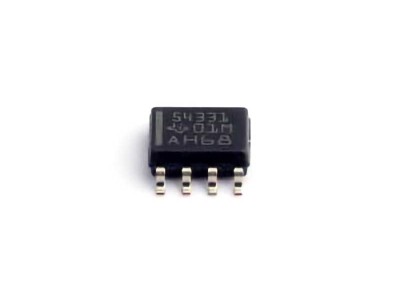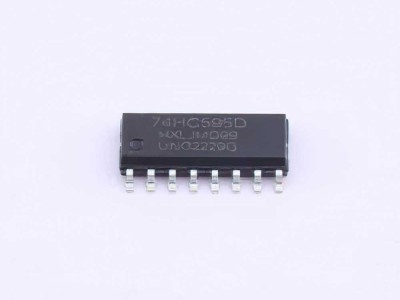
Understanding the CP2102-GM R and Common Issues
The CP2102-GMR is a popular USB-to-UART (Universal Asynchronous Receiver-Transmitter) bridge designed by Silicon Labs, widely used in embedded systems and IoT applications for data transmission between microcontrollers and computers. Despite its reliability, users often encounter various challenges when integrating the CP2102-GMR into their systems, including driver issues, Communication failures, and hardware inconsistencies.
To effectively troubleshoot these issues, it's essential to understand the root causes and how to address them. In this first part of the article, we’ll explore common problems and their respective solutions, enabling you to quickly restore proper functionality.
1. Driver Installation and Compatibility Issues
One of the most common hurdles when working with the CP2102-GMR is driver-related issues. The device requires a specific driver to facilitate communication between the USB port on your computer and the UART interface of your embedded system. If the driver is missing, outdated, or incompatible with your operating system, the CP2102-GMR may not function as expected.
Solution:
Update Drivers : Ensure that you are using the latest drivers available from Silicon Labs' official website or through the device’s automatic update tool. Outdated or improperly installed drivers can cause communication errors.
Check OS Compatibility: Confirm that the driver supports your operating system version. For example, drivers for Windows 10 might differ from those required for Windows 7 or macOS.
Reinstall the Driver: If the device still isn’t recognized, try uninstalling the existing driver and reinstalling it. A clean install can often resolve hidden issues.
2. Device Not Recognized by the Host System
Another common issue is the CP2102-GMR device not being recognized by the host system, even though it appears connected. This could stem from problems such as faulty hardware, Power issues, or incorrect USB ports.
Solution:
Try Different USB Ports: Sometimes, the issue may be as simple as the USB port being faulty. Swap between USB 2.0 and 3.0 ports, and also test different physical ports on your system to rule out port-specific issues.
Check the Power Supply: The CP2102-GMR may require adequate power from the USB port to function correctly. Make sure your computer's USB port provides sufficient power, and if necessary, use a powered USB hub.
Inspect the Hardware: A defective CP2102-GMR chip or faulty USB cables can also prevent proper recognition. Replace the cable and test the device on another system to check for hardware failures.
3. Data Transmission Errors and Corruption
When using the CP2102-GMR for serial communication, data transmission errors such as data corruption, missing bytes, or incorrect baud rates may occur. These problems often arise due to mismatched configurations, signal interference, or buffer overruns.
Solution:
Match Baud Rate Settings: Ensure that both the CP2102-GMR and the connected device are configured to use the same baud rate. If the rates don’t align, communication can be disrupted, leading to corrupted data.
Check for Flow Control Issues: The CP2102-GMR supports hardware and software flow control, which manages data transmission to prevent overflows. If flow control settings are misconfigured, this can lead to buffer overruns and lost data. Adjust the flow control settings in both the device and host system to align properly.
Optimize Timing : In some cases, the timing of data transmission may be a factor in errors. Reducing the data transfer rate or adjusting clock speeds might resolve issues with corrupted data.
4. Overheating and Power Supply Problems
When the CP2102-GMR is used for extended periods, it may overheat or encounter power supply issues, which can lead to unstable behavior or device failure. Heat buildup can cause the chip to malfunction or stop working entirely.
Solution:
Monitor the Temperature: Use diagnostic tools to monitor the chip's temperature during operation. If it overheats, consider using heat sinks or improving ventilation around the device.
Provide Stable Power: Fluctuations in the power supply can also cause instability. Ensure that the power source is stable and can supply consistent voltage, especially when using multiple devices in your system.
5. Incorrect Communication Protocols
While the CP2102-GMR primarily supports UART communication, some users may mistakenly attempt to use the device for other protocols (such as SPI or I2C), leading to failures in data transfer or non-functioning devices.
Solution:
Verify the Communication Protocol: Double-check that you are using the correct UART communication settings for your specific application. If you need to implement other protocols like SPI or I2C, consider using chips designed specifically for those protocols.
Advanced Troubleshooting and Preventative Measures
Once you've tackled the most common issues outlined above, there are several advanced troubleshooting strategies and preventative measures you can take to ensure that your CP2102-GMR operates seamlessly over the long term.
6. Handling USB and IRQ Conflicts
In some cases, the CP2102-GMR may experience conflicts with other devices connected to the same USB hub or IRQ (Interrupt Request) channel. These conflicts can lead to issues like slow data transfer, device disconnection, or even system crashes.
Solution:
Change USB Hubs: If possible, try connecting the CP2102-GMR to a different USB hub or port. USB hubs can sometimes conflict with other devices, especially if multiple high-speed devices are connected.
Check IRQ Assignments: Although IRQ conflicts are less common with modern operating systems, they can still occur in certain circumstances. Check your system’s Device Manager (on Windows) or System Information (on macOS) for any IRQ conflicts. Resolving such conflicts might involve adjusting system settings or reinstalling device drivers.
7. Firmware Upgrades
Just like any hardware component, the CP2102-GMR may require occasional firmware updates to improve functionality, fix bugs, or introduce new features. Failing to update the firmware could lead to problems, particularly if new software updates have introduced compatibility changes.
Solution:
Check for Firmware Updates: Visit the official Silicon Labs website to see if newer firmware versions are available for your CP2102-GMR device. Updating the firmware can enhance the performance and reliability of your device.
Follow Upgrade Instructions Carefully: Ensure you follow the correct procedure for upgrading the firmware. Incorrect updates can cause irreversible damage to the device, so it’s crucial to back up any important data before proceeding.
8. Debugging Communication Issues
For more complex communication issues, it may be necessary to use diagnostic tools to troubleshoot the serial connection between the CP2102-GMR and the target device.
Solution:
Use Serial Debugging Tools: Tools like logic analyzers or oscilloscopes can be extremely useful for analyzing UART signals. These devices allow you to capture and visualize the data traffic on the TX (transmit) and RX (receive) pins, helping you identify the exact point where communication fails.
Verify Pin Configuration: Ensure that the CP2102-GMR’s UART pins (TX, RX, CTS, RTS, etc.) are correctly configured for your application. Incorrect pin connections or miswired circuits can lead to complete communication failure.
9. Prevention: Design Considerations
Preventative measures during the design phase of your embedded project can save significant troubleshooting time later. By carefully considering aspects like power supply, thermal management, and signal integrity, you can minimize the risk of issues arising.
Solution:
Implement Proper Grounding: Ensure that the CP2102-GMR and other components are properly grounded to avoid voltage fluctuations that could lead to data errors or instability.
Shield Cables and Connections: If you are working in a noisy environment with high electromagnetic interference ( EMI ), consider using shielded cables and connectors to reduce the risk of signal degradation.
10. Maintaining Long-Term Stability
Once your system is up and running smoothly, it’s important to perform regular maintenance checks to ensure continued stability. Keeping your drivers, firmware, and hardware in optimal condition will prevent unexpected failures down the line.
Solution:
Regular Firmware and Driver Updates: Continuously monitor for new driver or firmware releases to keep your system up-to-date with the latest improvements.
Perform Periodic Testing: Run tests periodically to check the device’s performance. This can include stress tests, data transfer tests, and hardware inspections.
By understanding these common issues and implementing these troubleshooting strategies, you’ll be able to ensure that your CP2102-GMR continues to function reliably in your embedded systems, allowing for smooth data transmission and system operation.
Partnering with an electronic components supplier sets your team up for success, ensuring the design, production, and procurement processes are quality and error-free.


